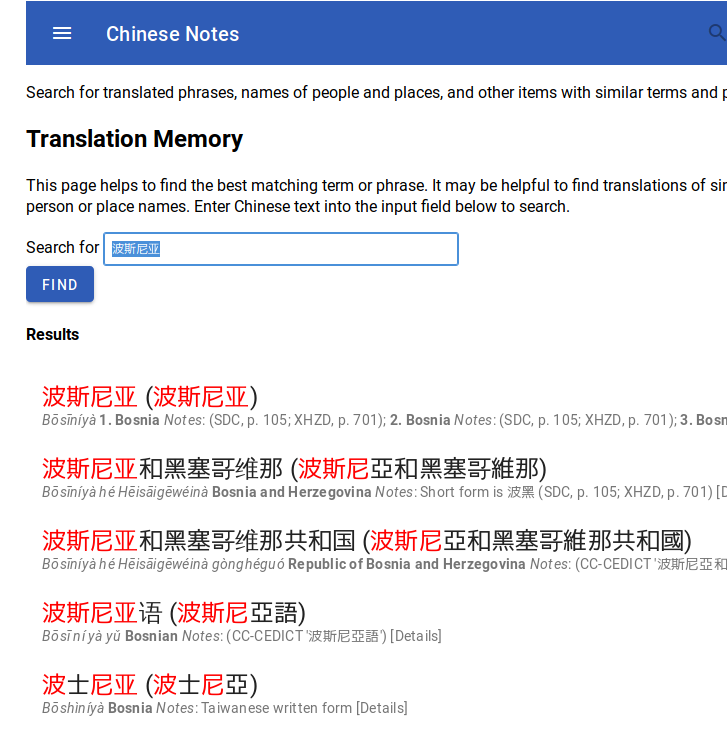Dictionary Help
Translation Memory Search
The Translation Memory Search page helps to find English for hard-to-translate terms or phrases, perhaps with unusual word combinations or transliterations of person or place names. Enter Chinese text into the input field below to search.
Concept
The concept of Translation Memory Search is to find the closest matching term based on several criteria, including how many characters match, similarity of the character order, Pinyin match, and inclusion of the query in the notes. The potential matching terms to be indexed the translated phrases, named entity database (people, places, etc), or dictionary. For example, it may help find difficulty Korean, Japanese, and Tibetan names.
How to Use Translation Memory Search
Enter a phrase or the name of an entity in the text area and click Find. The closest matching term will be ranked at the top. Click on the Chinese text of the term or the [Details] link to find out more about the term. The matching characters for each result are shown in red. An example for the place name 波斯尼亚 'Bosnia' is shown in the screenshot below. The top result is 波斯尼亚 and then a number of place names related to Bosnia.

As another example, try the phrase 白浪滔天 'sky-high white waves are roaring' from the poem 浪淘沙·北戴河 Ripples Sifting Sand: The Seaside - Beidaihe (Mao Zedong 2020, Illustrated Poems of Mao Zedong, trans. by Xu Yuanchon, p. loc. 632). You should see a few closely related idioms.
How does Translation Memory Work?
Translation memory works by searching on an index of all the terms in the dictionary, named entity databaes, and a bank of phrases. The terms with the most characters included (unigrams) are retrieved in the search. Terms with the same pinyin pronunciation are also retrieved and combined with the previous set. Each term is examined to see if it is a part (subtstring) of the term or vice-versa. Then the deviation from the exact order of the query (Hamming distance) is computed. All of these aspects are scored and the scores summed up and sorted.